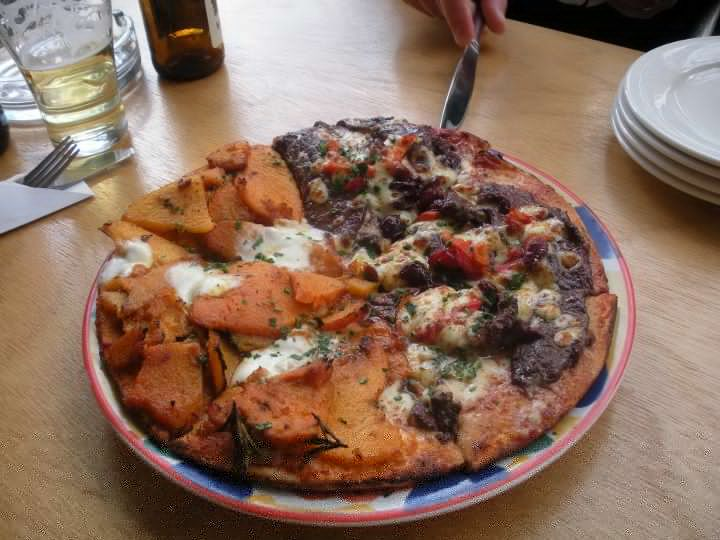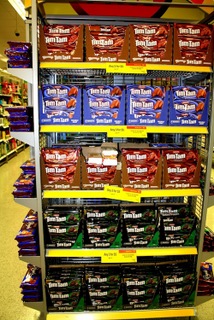
Adapting to and experimenting with the local food when studying abroad
By Lauren Alexander
Published April 24, 2012
 Like language, fashion, or music, food is a way in which people express their culture. Italy is famous for their pasta, Australia is known for vegemite and Ireland is all about the beer. Countries, regions and cities are home to flavors that help them define what makes them distinct. Tasting local cuisine is not only one of the most exciting parts of international travel, but you can sure learn a lot about a country by eating the way locals eat.
Like language, fashion, or music, food is a way in which people express their culture. Italy is famous for their pasta, Australia is known for vegemite and Ireland is all about the beer. Countries, regions and cities are home to flavors that help them define what makes them distinct. Tasting local cuisine is not only one of the most exciting parts of international travel, but you can sure learn a lot about a country by eating the way locals eat.
The best way to understand local flavor is to eat it! Go ahead, try that hole-in-the wall a few blocks off of the main street! You should expect to experience authentic flavors otherwise masked by the touristy area of a city. Also, keep an eye out for street food. This is a great, inexpensive way to sample unique flavors of a city. Picture those hotdog carts famous to New York selling falafel in the busy streets of Tel Aviv. Just use your judgment as to whether the food is hot and fresh, and go wherever the line is longest.
The Do's
 Before you head abroad, make of list of all of the food you’re itching to try. I added foods like Vegemite, kangaroo meat, and Tim Tams to my list prior to heading abroad to Australia. I tried Vegemite on toast my second day there, and tried it only once more in my five month stay. It was salty, thick, and smelled like a combination of soy sauce and beef bouillon. Gross, I know. I couldn’t understand why the Aussies craved this condiment – must have been an acquired taste. It’s okay to hate a local favorite dish. Reaching beyond the boundaries and trying something new is what studying abroad is all about!
Before you head abroad, make of list of all of the food you’re itching to try. I added foods like Vegemite, kangaroo meat, and Tim Tams to my list prior to heading abroad to Australia. I tried Vegemite on toast my second day there, and tried it only once more in my five month stay. It was salty, thick, and smelled like a combination of soy sauce and beef bouillon. Gross, I know. I couldn’t understand why the Aussies craved this condiment – must have been an acquired taste. It’s okay to hate a local favorite dish. Reaching beyond the boundaries and trying something new is what studying abroad is all about!
I also tried kangaroo meat, despite the fact that I’m a vegetarian. I had to try it, right? After only one bite of the extremely tender, juicy, melt-in-your mouth kangaroo meat, I had enough. Oh, and Tim-Tams, a favorite Australian cookie, were fully stocked in my room at all times. They came in a variety of flavors from Double-Coat to Rum Raisin, and I enjoyed every single bite of every single cookie. Eating what and how the locals do will give you a feel for how people in a different country live, think, and interact with the world around them.
The Don'ts
Don’t over look the beverages of a foreign country either! Pub culture lends itself well to creating strong international friendships as Sourabh Chakraborty experienced in his semester abroad in Ireland. For him, the local corner pubs were a place where wonderful conversations, cultural knowledge, and friendships blossomed. Although an American outsider, the locals welcomed him as they “explained everything about local ales and how the culture revolved around it…Ireland is definitely a place for social drinking.” As a way to break the language gap, going to a pub was “my way of striking up a conversation or friendship with these people.” Sourabh vividly remembers one of his favorite professors from late night pub chats, where he actually “got the best feedback” for his course.
There are many ways to expose yourself to local cuisine without blowing your budget. Take a stroll through the supermarket: compare prices to back home, check to see how many flavors of cereal they have, or if they refrigerate their eggs. (Note: they do not refrigerate eggs in Australia – just goes to show how farm fresh they are). I always find it really interesting to check out the candy isle. Seeing how foreigners enjoy their chocolate is fascinating. I bet it will be a challenge to find a Hershey bar!
It’s the ingredients, spices, and preparations which make international cuisine different from what you’re used to. Looking for foods from back home is far less satisfying than exploring local foods. Skip over the McDonald’s in the center of the city, and ditch the Starbucks abroad – go for local! You’ll be surprised as to what foods and eating habits become routine if you give them a chance.
Looking for more information? Check out our study abroad student guide to learn more.
Lauren R. Alexander studied abroad in Melbourne, Australia in 2011. She is currently working towards a BA in Communication and Theater at American University in Washington, DC.
